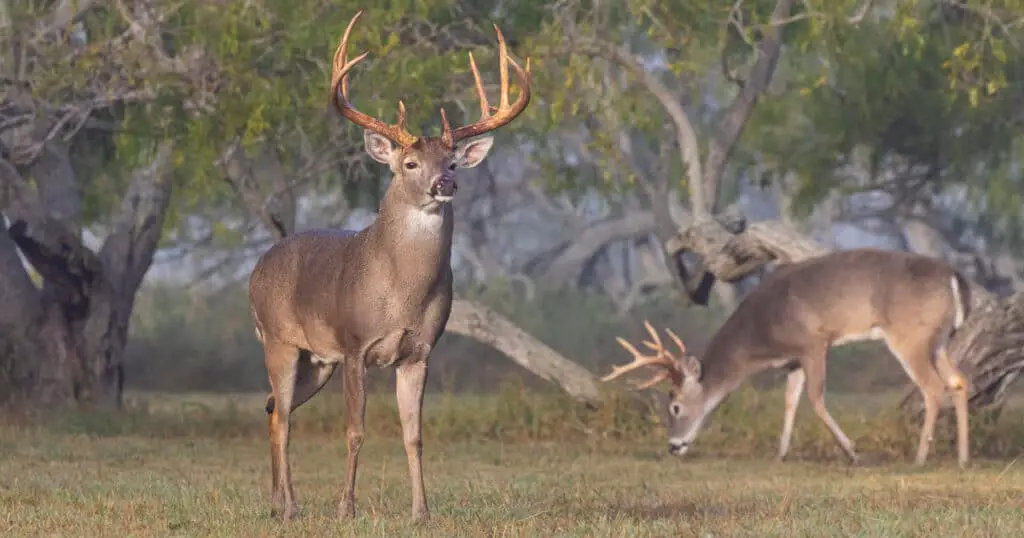Deer, in all their varieties, are graceful animals with a wide range of fascinating characteristics. Their physical attributes and instincts have perfectly evolved to make them highly adaptable and able to live in their native habitat and local environments. Keep reading to learn all about deer characteristics and their unique qualities.
Let’s discuss deer traits, habits, and physical properties that let deer survive and thrive in the wild, successfully evading their natural predators and adapting to the changing environments in which they live.
Deer Have Antlers
Table of Contents
ToggleDeer are cervids. In most cervid species, male deer grow antlers, using them during mating season to attract female deer and to intimidate or fight off other males as part of their mating ritual.
Antlers grow from a deer’s head, specifically from an area called the frontal pedicle.
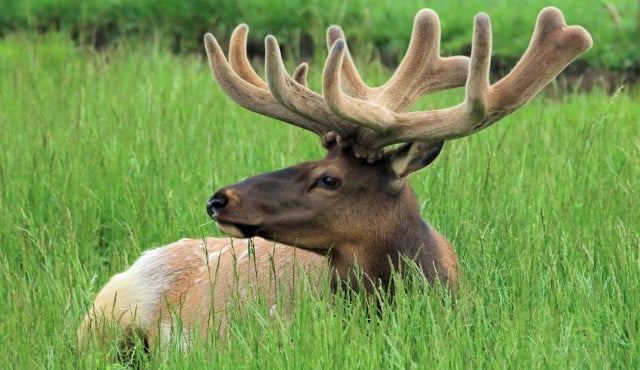
In most deer species, only males grow antlers, but Reindeer are an exception to this rule. Female reindeer grow antlers, and are the only female deer who do (they use them to dig for food in the snow).
A male deer fawn will usually develop what look like buttons on the frontal pedicle when they’re between four and five months old.
The fawn will soon start growing its antlers. The fully grown male deer loses and regrows its antlers once a year. This process is called antler shedding.
A variety of factors impact how quickly a deer’s antlers grow and how large they become. These include genetics, nutrition, and age.
When a deer is born and its mother’s health are other potential factors.
Why Do Deer Have Antlers?
Experts believe that antlers serve several different purposes. One of these is how male deer use their antlers to intimidate rivals for territory and during the breeding season, called the rut.
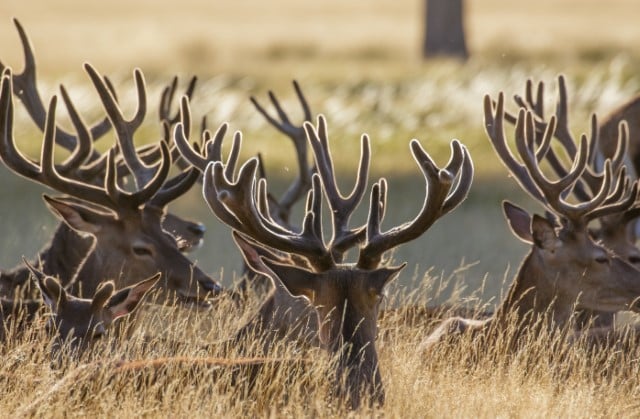
Even if they don’t use their antlers in physical fighting (they sometimes do), a large set of antlers will often intimidate potential challengers.
When bucks use their antlers to fight, they lock them. Sometimes this ends in disaster. For example, there have been instances of two bucks’ antlers getting permanently locked.
If this happens, the deer will starve to death. Some biologists also believe that deer occasionally use their antlers to ward off and even physically fight predators.
How are Antlers Different from Horns?
Antlers are different from horns. Bovids have horns, which are permanent.
One pair of horns will last a bovid’s entire life. Deer with antlers, however, shed and regrow their antlers every year.
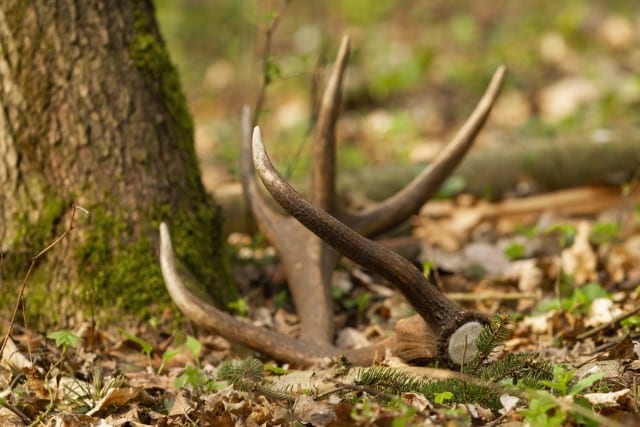
Also, horns contain keratin while antlers don’t. Cervids have antlers that are comprised completely of bone.
Unlike horns, antlers have branches and are typically larger and longer.
Horns have a keratin covering and a bony inside structure. They’re never branches.
Animals with horns vary in terms of whether they stop growing or keep growing all through their lives. The horns may get very large in the latter scenario.
Antlers and Horns Have Different Purposes
The primary purpose of antlers is to fight rivals during the mating season, as well as attract the attention of females. Horns, on the other hand, as more often used for fighting off predators and to show dominance.
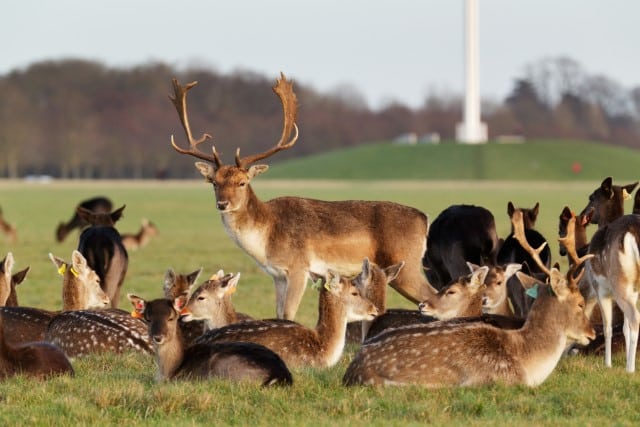
In contrast to horns, antlers are shed and regrown every year. Each winter, every species of deer with antlers will shed its antlers after a long reduction in testosterone levels.
By some time in April, the deer will have buttons or nubs on its head.
The deer will completely regrow its antlers by August. In the summer, deer have a fuzzy coating called velvet.
This is when the antlers are still growing, and the velvet is there to bring blood to the developing bones of the antlers. It’s not until late summer that the velvet comes off of the antlers in a process called velvet shedding.
This is when they stop growing and the blood supply stops. By the early part of September, a deer’s new antlers will in most cases be fully grown.
Deer Stay Alert When Sleeping
One of the most impressive deer characteristics is how they sleep with their eyes open. A deer’s hearing and keen sense of smell also stay alert as it rests.
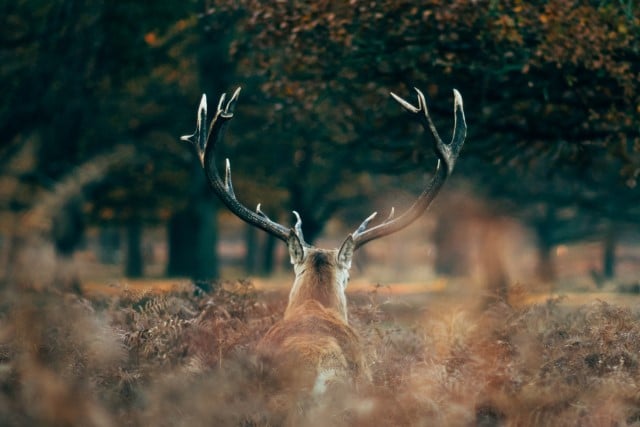
This makes life safer for them as prey animals.
Deer sleep in short bursts between 30 seconds and just a few minutes. It can more accurately be described as dozing.
Deer hearing and this animal’s sense of smell are crucial for helping deer stay alert to danger when sleeping. A deer’s ears constantly rotate, and this means they will alert the deer if there are any changes in the environment.
Deer Have Tiny Tails and Long Legs
Its relatively small tail is one of the most striking deer characteristics. One reason for the deer’s small tail is how they raise it when they want to alert other deer to potential danger.
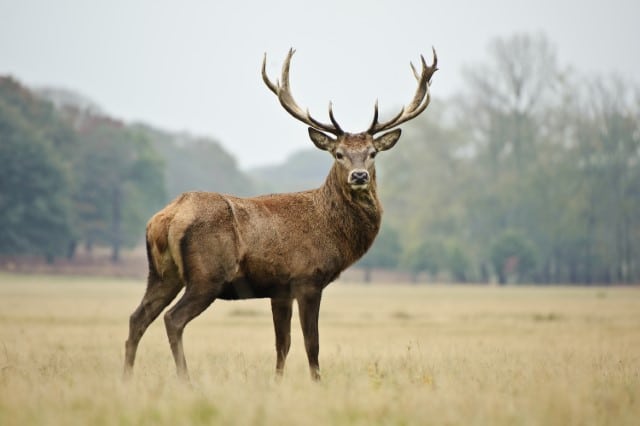
Deer have long legs because of how fast they must run. Their running speed gives them a way to escape if there are predators in the area.
Their legs are extremely powerful, and this is necessary for helping them run. In some situations, deer may use their strong legs as weapons, stomping on threats.
Their strong legs also make deer powerful swimmers and deer can also jump very high.
Deer Come in a Wide Range of Sizes
There is a wide range of sizes among different deer species. The smallest kinds of deer may be as tiny as 1.25 feet tall, while the largest can be up to 6.5 feet tall.
There are 55 deer species in total. Some of the largest deer are reindeer, elk, and moose.
Examples of tiny deer are the water deer (these deer have tusks instead of antlers and are sometimes called vampire deer) and the Northern Pudu and Southern Pudu.
The Pudu is as small as between 12 and 17 inches from hooves to shoulder. At the time of birth, a Pudu is only around six inches tall.
Moose are the largest species of deer. The Alaskan moose is the largest, and it can be as tall as 7 feet at the shoulders. The tallest Alaskan moose ever seen was 7 feet, 7 inches at the shoulders.
Deer Are Found on Most Continents
Deer are found around the world. The only continents where there aren’t any deer are Antarctica and Australia.
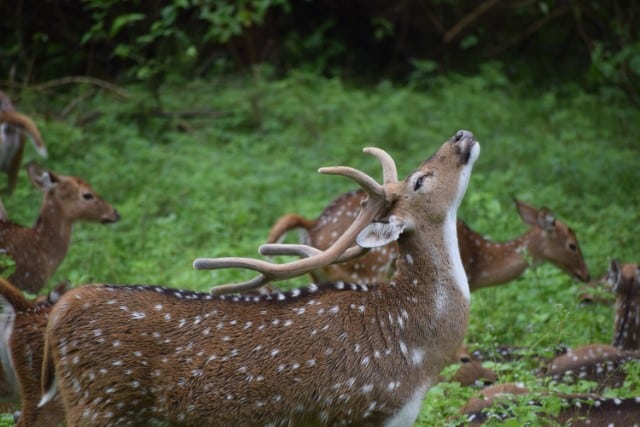
Some common types of deer found in North America include: Whitetail Deer, Moose, Caribou, Mule Deer, and Elk.
The largest moose ever found was 1,808 pounds. There are some Alaskan moose with antlers as wide as 80 inches.
In Eurasia, the largest moose species is called the East Siberian Elk. This moose can weigh as much as 1,600 pounds.
Fawns Don’t Have an Odor
Baby deer don’t have the ability to flee from predators, and their lack of odor helps protect them from predators.
Without an odor, predators have difficulty tracking down (and preying on) these tiny deer.
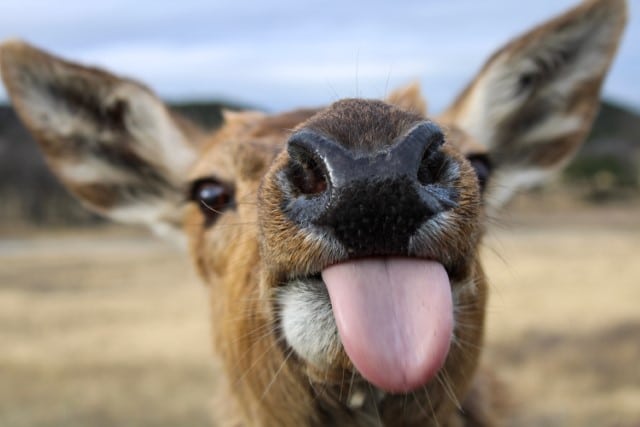
Otherwise, they would be an easy target. Baby deer are also protected by their mothers’ vigilance and ability to stay alert at all times, even when they’re asleep.
Mother deer must often leave their babies when they get food. They do this to avoid putting too much of their own odors onto the babies, as this would also attract predators.
Fawns are also virtually noiseless. A baby deer will only make noise when it’s in distress, so its mother will come to help.
Deer Enjoy 310 Degree Vision
A deer’s eyes are located on the sides of its head. This is important because it helps deer have a greater range of vision from any position.
This is one of the most essential deer characteristics for this animal’s survival. The deer’s field of vision is 310 degrees.
We humans only have an approximately 180-degree field of vision.
Deer vision is distinctly different from human vision. A deer’s eyes have many more rods in proportion to cones than human eyes.
The rods are what make eyes able to see movement, as well as changes in light and shape. The fact that deer have so many rods means they can see much better than we can in the dark and at dusk and dawn.
A deer’s eyes lack UV filters. This means that they’re able to see UV light much more easily than we can.
These animals don’t see much detail. Overall, deer vision quality is only about 20/100.
Yet the other attributes of deer vision mean it’s perfect for the animal’s environment and safety needs.
Deer are best able to perceive blue spectrum colors. They have difficulty seeing shades of red.
If they’re presented with red or a similar shade, such as orange, they will usually just see gray or green.
The deer’s spectacular ability to perceive movement, far before a human would be able to, makes their vision perfect for what they have to contend with.
Deer Noses are Comparable to Dogs
As acute as the canine sense of smell may be, deer have a better one. There are as many as 297 million olfactory receptors in a deer’s nose.
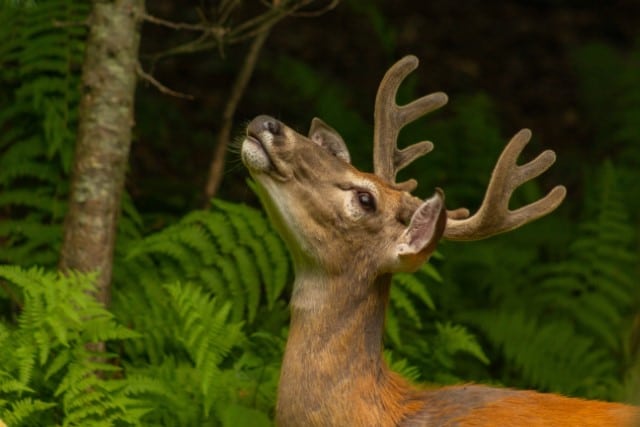
Dogs have 220 million, while humans have a mere 5 million. Deer noses are so quick to perceive and accurate that even spray-blocking sprays hunters use don’t work.
Deer noses have a bumpy texture. This is believed to make it better able to take in more odor molecules, making the smell detection process easier.
Deer also have enormous nostrils, helping to bring in more air and smells.
Deer Stay Active All Year Long
While they’re a bit less active in the winter, deer don’t hibernate.
They’re technically active all year long. Deer are much hardier and more resilient than you might expect.
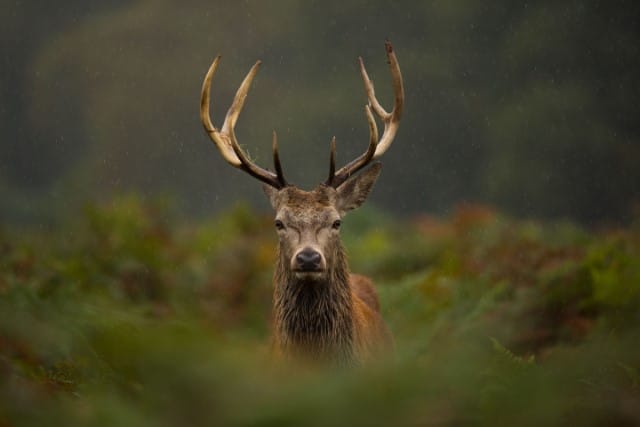
There are whitetail deer living in northern regions of Canada that must deal with harsh conditions for a large amount of the year.
Deer help prepare themselves for the rigors of winter by fattening up in the fall and choosing premium winter bedding areas. After all, they must deal with scarce food supply in the snow and icy weather.
One of the hardest months of winter for deer is February. This is the time of year when a deer’s store of body fat may start running relatively low.
By the time April arrives, deer may be quite weak. They tend to be vulnerable at this time of year, since they’ve spent so much time in the winter with low food supplies and other significant stressors.
It takes some time for deer to eat new growth and gain strength again and get ready for what comes next during their next season of life.
Deer Characteristics (in summary)
As we’ve seen, deer are unique animals with features perfectly fitted to their environments. Deer are prey animals, and they must stay constantly alert and aware of their natural predators.
Let’s see a review of our list of deer characteristics and unique qualities:
- In most species, male deer have antlers
- Deer can sleep with their eyes open
- Deer have tiny tails and long legs
- There are deer species in a wide range of sizes
- Most of the world’s continents have species of deer
- Fawns don’t have an odor
- Deer have 310-degree vision
- Deer have a better sense of smell than dogs
- Deer stay active throughout the deer
Of course, there is much more to learn about deer. Explore our blog and search through hundreds of articles about deer on our website.

